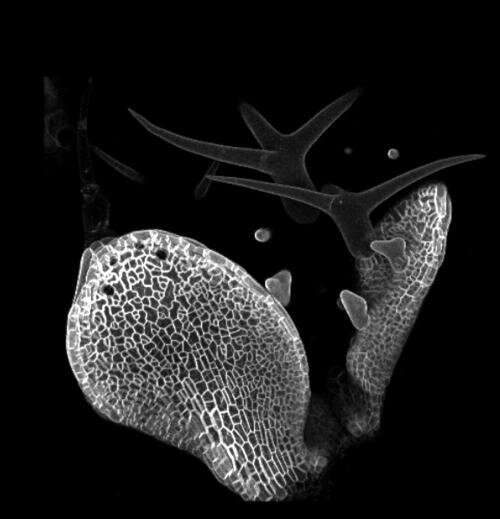How do plants know how big to grow?

Organisms grow to fit the space and resources available in their environments, leading to a vast diversity of body sizes and shapes within a population of the same species. What are the genetic and physiological mechanisms that determine how big an organism can grow?
In insects and mammals, the cellular and molecular factors underpinning body size are well established. But in plants, this process has puzzled scientists for generations. How a plant controls the size to which it grows is a fundamental part of its developmental processes and impacts its likelihood of success in a particular environment.
"It is crucially important to understand how plants control their overall size during development," said Carnegie's Sue Rhee, who led a team of scientists investigating this mystery. "This knowledge could help us improve agricultural productivity and guide land-use decision-making, especially as many environmental conditions are being reshaped by climate change."
The Carnegie team—lead author Flavia Bossi, along with Benjamin Jin, Elena Lazarus, Heather Cartwright, and Yanniv Dorone—made an important breakthrough in answering this long-standing question. Their findings are published in Development.
Key to elucidating this process is the developmental switch from cellular proliferation— division that increases the number of cells—to cellular differentiation—specialization into organs and tissues.
Proliferation ends when all of the cells in an organ have differentiated. This controls the number of cells that comprise that organ and, in turn, the rate and duration of organ growth determines the total body size of the plant.
"So, what we wanted to know was, how does the plant know when to exit the proliferation stage?" said Bossi.
Using an array of advanced research techniques, the team was able to determine that a previously uncharacterized gene they called CHIQUITA1, together with several similar CHIQUITA-like genes, plays a crucial role in maintaining the timing of the transition between proliferation and differentiation in the mustard plant Arabidopsis thaliana. They found that CHIQUITA1 ensures that the cells proliferate a certain number of times before differentiating, revealing an important step in how plant body size is controlled.
Bossi concluded: "Plants are fundamental to so many aspects of human life—from the food supply to biofuels, medicines, lumber, textiles, and more. Understanding how they develop and regulate their size in response to environmental conditions could help us prepare for a warming world."
Unlike most research on cell proliferation, this work was done on the individual cell level, rather than at the population level, highlighting how much more there is to learn about the rules that govern plant biology.
More information: Flavia Bossi et al, CHIQUITA1 maintains the temporal transition between proliferation and differentiation in Arabidopsis thaliana, Development (2022). DOI: 10.1242/dev.200565
Journal information: Development
Provided by Carnegie Institution for Science




















